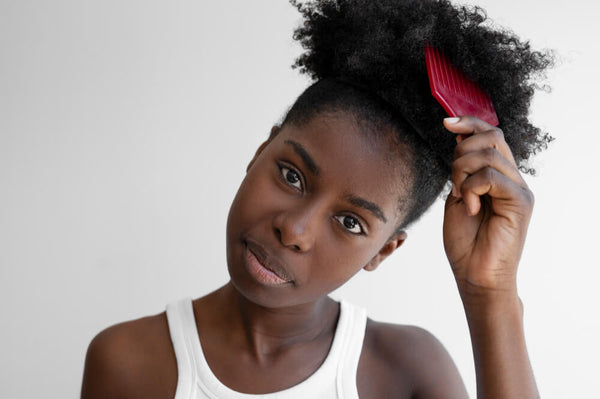I need to tell you about Lisa, a client who came to me after spending six months staring at exosome before and after photos online. "I want that," she said, pointing to a dramatic transformation picture. "But is this real? Or is this just another treatment that works for everyone except me?"
If you've been scrolling through those compelling before and after galleries, wondering if your hair could really make that kind of comeback, let me walk you through what actually happens between the "before" and "after"—the good, the challenging, and the truly transformative.
The "Before" Moment That Brings Most Women to Us
Most women considering exosomes have reached what I call the "treatment fatigue" stage. They've tried the Rogaine, maybe even PRP, and seen modest results that didn't justify the ongoing effort or expense. They're tired of spending money on solutions that only work halfway.
What I often see in our Atlanta clinic are women who've become experts at hiding their hair loss. They've mastered the strategic parting, the hair fibers, the styles that conceal thinning areas. They're ready for something that actually changes the game rather than just managing the symptoms.
What Actually Happens During the "In-Between" Phase
The first month after exosome treatment is often the most emotionally challenging. You might not see dramatic changes yet, but behind the scenes, something important is happening. The exosomes are delivering those crucial instructions to your follicles, but hair growth cycles don't operate on our preferred timeline.
I always warn my clients: don't expect to look in the mirror at week two and see new hair. What you might notice instead is reduced shedding—fewer hairs in your brush, less accumulation in the shower drain. This is actually the first sign that things are shifting in the right direction.
By months two to three, most women start seeing the beginnings of what we call "peach fuzz"—those fine, colorless baby hairs that signal dormant follicles are waking up. This is when I usually get excited texts with photos asking "Is this what I think it is?"
The "After" That's Actually Achievable
The dramatic before and after photos you see online? They're usually the best-case scenarios, often after multiple treatments and optimal conditions. But here's what realistic, beautiful improvement looks like for most women:
Your part appears tighter because there's more density along that line. Your edges look softer because there's new growth filling in previously sparse areas. Your ponytail feels thicker when you gather it. And most importantly, you stop seeing excessive shedding every time you touch your hair.
I've watched women go from avoiding mirrors to actually enjoying styling their hair again. That emotional shift is often more powerful than any physical measurement.
Why Some Women Get Better Results Than Others
The women who see the most dramatic transformations typically share certain characteristics: they have early to moderate hair loss rather than advanced scarring, they address underlying health issues simultaneously, and they're committed to the full process.
I recently worked with Chloe, who had early CCCA and saw incredible density improvement after exosome therapy. Still, I do recall Sarah, who was so sure that exosomes would somehow resolve her malnutrition situation. But we had to increase and fix her iron levels before the treatment could be effective.
Our Approach: Setting the Stage for Success
At Nina Ross Hair Therapy, our extensive experience has shown us that exosomes work best when we prepare you for the treatment properly first.
For example, we might suggest healing your gut through specific protocols before the treatment, or in other cases, address your hormonal imbalances. We also use advanced injection techniques that ensure the exosomes reach the deepest part of the follicle where regeneration happens.
For women who suffer from inflammatory diseases such as CCCA, we can administer exosomes along with anti-inflammatory treatments. This facilitates and creates the right conditions for recovery. Our idea is not only to add growth factors but also to get rid of those factors that block the growth.
The Real Timeline of Transformation
If you're considering exosome therapy, understand that this is a biological process, not an instant fix. Most women need 2-3 sessions spaced about a month apart, and the full results unfold over 6-9 months as hair cycles complete.
The investment is significant, which is why we're brutally honest about who's likely to benefit. If you have extensive scarring or expect one treatment to solve decades of hair loss, we'll tell you straight—this might not be your solution.
Ready for Your Own "After" Story?
If you're tired of temporary solutions and ready to explore whether exosome therapy could create your own transformation story, book your Hair Therapy Evaluation with us today for just $99. We’ll look at your specific situation and create a realistic plan for the results you want to see.














